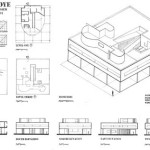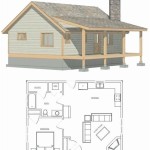House Addition Foundation Plans: A Comprehensive Guide
Adding an extension to your house can be an exciting undertaking, offering increased living space, greater functionality, and enhanced property value. However, before embarking on this project, it's crucial to carefully consider the foundation of your addition. This article provides a comprehensive guide to house addition foundation plans, covering essential information about design, materials, and considerations for a successful and durable structure.
Understanding Your Existing Foundation
The foundation of your existing home serves as the bedrock upon which your entire structure rests. To ensure a seamless and stable addition, it's essential to understand the type and condition of your existing foundation. There are various types of foundation systems, including:
- Slab Foundation: A single, poured concrete slab that supports the entire house.
- Crawl Space Foundation: A space between the ground and the floor that provides access for utilities and ventilation.
- Basement Foundation: A fully enclosed space below the ground level, offering additional living area and storage.
- Pier and Beam Foundation: Supports are spaced at intervals and connected by beams, creating a framework for the floor above.
By carefully assessing the condition of your existing foundation, including any cracks, settling, or other structural issues, you can determine the most appropriate approach for connecting the addition.
Planning the Foundation Design for Your Addition
The foundation design for your addition should be meticulously planned to ensure structural integrity and seamlessly integrate with your existing foundation. Key factors to consider include:
- Size and Weight of the Addition: The weight of your addition will influence the required strength of the foundation. Larger and heavier additions will require more substantial support.
- Soil Conditions: The type of soil beneath your property plays a critical role in determining the foundation type. Expansive soils, for example, require special considerations to prevent movement and cracking.
- Local Building Codes: Building codes vary by location and dictate the required foundation depth, materials, and construction techniques. Compliance with these codes is essential for a safe and permitted project.
- Budget: Different foundation types can vary significantly in cost. A well-planned budget will help you choose a suitable option that aligns with your financial constraints.
It is highly recommended to consult with a qualified structural engineer to design and plan the foundation for your addition. Their expertise ensures a structurally sound and safe foundation that meets all applicable building codes and considerations.
Connecting the Addition to the Existing Foundation
Connecting the foundation of your addition to the existing foundation is a crucial step in ensuring the integrity and longevity of your entire home. The method of connection will vary depending on the type of foundation you're working with. Some common approaches include:
- Slab to Slab: For slab foundations, the addition's slab can be poured directly onto the existing slab, creating a unified foundation.
- Crawl Space to Slab: A slab foundation for the addition can be supported by piers that extend down into the existing crawl space.
- Basement to Slab: The addition's slab can be tied into the basement foundation walls, utilizing steel reinforcement and proper anchoring techniques.
- Pier and Beam to Slab: For a pier and beam foundation, the addition's slab can be supported by piers that are connected to the existing beam system.
The connection process should be carried out with meticulous attention to detail and with the use of high-quality materials, ensuring a seamless and robust integration between the existing foundation and the addition.
In addition to the above, it's essential to consider the following:
- Expansion Joints: Incorporating expansion joints between the existing foundation and the addition helps to accommodate any future movement or settlement, preventing cracks and damage.
- Moisture Control: Proper moisture control is crucial, particularly in areas prone to moisture penetration. This might involve installing drainage systems, vapor barriers, and other moisture-resistant components.
- Insulation: Adding insulation to the foundation of your addition will improve energy efficiency, reducing heat loss and lowering your utility bills.
House addition foundation plans are a crucial aspect of a successful extension project. Careful planning, understanding of existing foundation conditions, and expertise from a qualified structural engineer ensure a structurally sound, safe, and long-lasting addition to your home.
Diy House Addition Step 3 Foundation Kick Ass Or Die

Foundation Building Framing Construction

Building Your Home Addition Homeowner Guide Design Build Kitchens Baths Additions And Remodeling In Homeowners Rigid Insulation

Home Foundation Plan Design Plans How To Custom

Concrete Foundation Rebar And Form Construction Ideas For Building Small Home Addition Part Two

Remodel 812 Sqft New Addition Vp Builds

Foundation Plans With Electrical Hvac How To Plan Two Story Addition Electricity

New Minim House Plan Set Homes

Remodel 867 2nd Story Addition Vp Builds

Project Update Foundation Plan Completed Or So I Thought Byhyu 108








